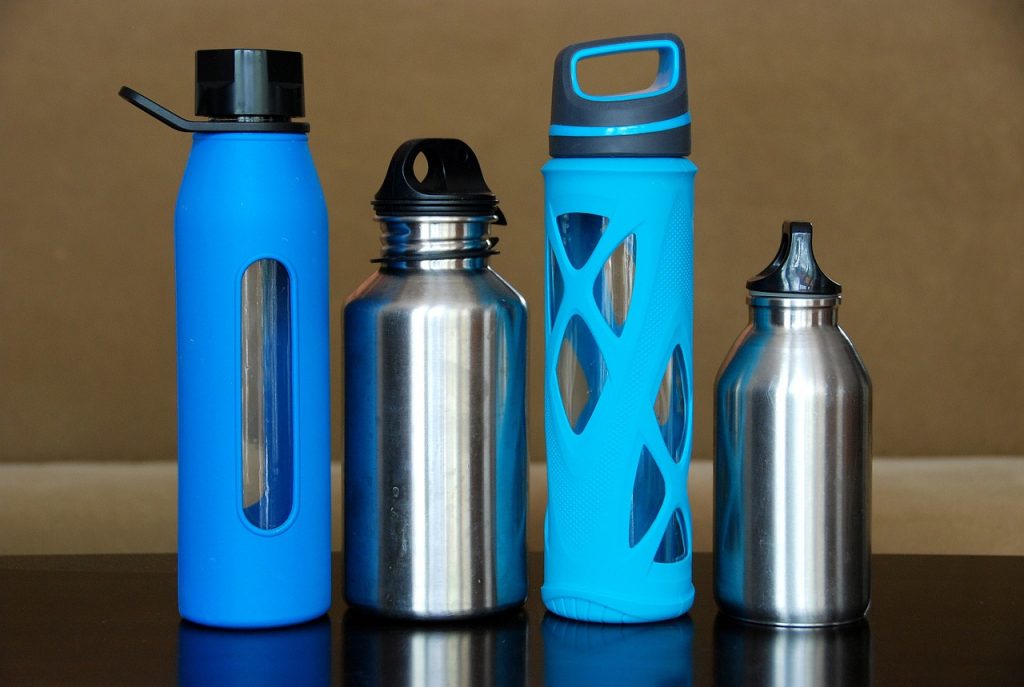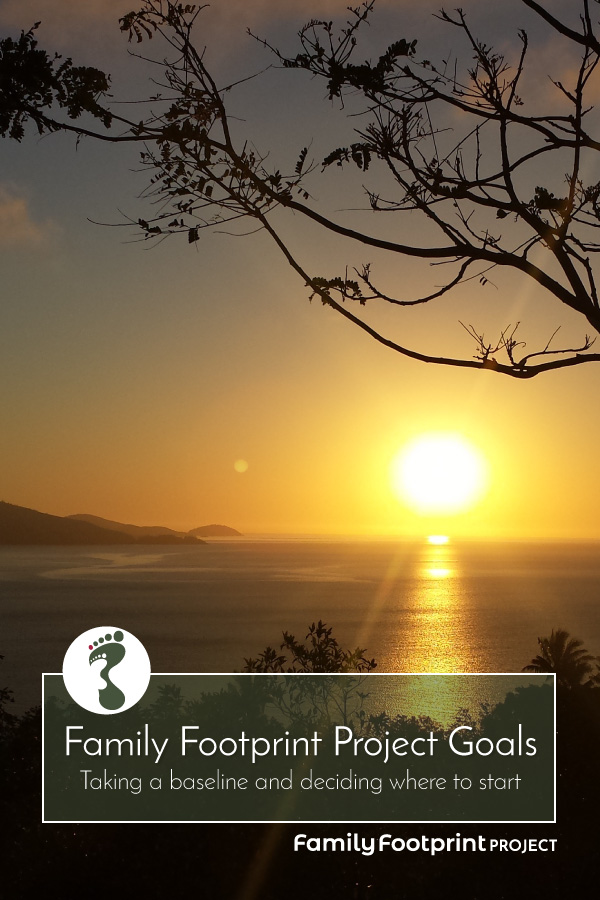Making a start
Well here we are on Day 1. What are my Family Footprint Project goals? What is it I want to achieve with this project? “To reduce our carbon footprint” is a lofty – and complicated – ambition. Where on Earth do we start?
Taking a baseline
Being a science-y type, I thought some data to inform our Family Footprint Project goals would be a good place to start. It made sense to take a baseline of how big our carbon footprint really is.
In truth, we are not at the very beginning of the path. We have been thinking about our environmental impact for quite a while now and, as a result, we have already made some changes over the years. I’ll catalogue those in a minute. In the past, however, our steps to live more ‘green’ have been rather haphazard and faltering. We haven’t mapped out our strategy in any concrete or conscious way. We’ve just picked up, and sometimes discarded, ideas as they seemed to fit our life. We’ve also been less than 100% committed to those ideas keeping them up only when it was convenient to do so. Now I want to be more analytical and deliberate in our approach as well as more consistent in our effort.
First steps to greening our home

But we have already taken some steps and here is what comes to mind…
- Using a refillable water bottle
- Either using reusable cup or sit in café for cuppa when out
- Using our local library including the digital apps for eBooks and Audiobooks.
- Giving away and receiving things through our local Buy Nothing group
- Using bamboo toothbrushes
- Packing “nude” lunches
- Using old towels, tea towels etc as rags
- Wearing secondhand and hand-me-down clothes
- Buying in bulk, that is buying the largest packet of things
- Making my own household spray cleaner with natural ingredients
- Using Enjo microfibre cleaning cloths
- Using cloth shopping bags
- Washing clothes only after several wears (although the kids are not so good)
- Not using a cooling system other than fans
- Keeping the heating off during the day as much as possible and set at 18 degrees Celsius
- Drying clothes on the washing line or drying racks
- Meal planning inconsistently
- Growing a herb garden
- Reducing the number of meat meals each week
- Using a wood & coconut fibre dishwashing brush
- Using a reusable kitchen cloth rather than sponges
- Recycling batteries
- Washing in cold water
- Placing a “No Junk Mail” sticker on the mail box
- Cooking in bulk to have food in freezer instead of take away
- Repairing clothing if possible
- Passing old mobile phones down the line and then sending them to Mobile Muster
- Recycling according to the rules set by our local government
- Swapping to paperless billing and bank statements
- Cancelling our physical magazine subscriptions
- Using earth friendly products for body, hair, clothes and dish washing
- Shopping at the farmer’s market
- Putting scraps into our worm farm
Carbon Footprint Calculator
That is a respectable list, some of which we have been doing for ten or more years, but it is clear there is room for improvement.
When I was thinking about what we want to improve and our Family Footprint Project goals, it seemed sensible to have a starting point metric so I looked up carbon footprint calculators online. There are lots of options and several specific to Australia.
Eco Warrior Princess took four of them and shares her results and the pros and cons of each in this blog post.
I thought I would do one too and use that as a baseline measurement of our carbon footprint. However, the calculators involve quite a time investment (hats off to Jennifer, Eco Warrior Princess for doing four!) and, it seemed to me, a number of the questions require guesswork to answer, for example “Of the food you buy how much is wasted and thrown away?” which, to my mind, impacts the validity of the results.
Furthermore, Eco Warrior Princess found quite a variation in results between the different calculators with annual CO2 footprints varying between 4.72 tonnes and 10.02 tonnes. This gives me further reason to wonder about the validity of the calculators. That said, I can see advantages to being able to track your progress over time or just to face the reality of a number in black and white. If you are interested in giving this calculation a go yourself, I recommend reading Jennifer’s post.
For us though, honestly, I know there is much we can do to improve our carbon footprint without working through a calculator and I have many ways I’d prefer to invest my time. One thing the calculators do do though is set out the kinds of things that contribute to your footprint. This alone might be useful if you are not sure where to start or what aspects of your life need attention next.
I’ll list some of my priorities at the end of this post. At this stage, however, I don’t plan to set a goal around our tonnes of CO2 emissions partly because I don’t see how setting an arbitrary goal would be beneficial. I also want the path ahead to be a journey rather than a means of reaching a destination. And I want to acknowledge that I don’t think we will ever be ‘done’ with this project. There is no state of perfection to be achieved. We will tweak things. Our circumstances will change. There will be future opportunities and technologies that I can’t predict.
Bin Audit
It is important though, I think, to have some ways to measure our progress. Another strategy to use is the bin audit. I have done a bin audit of both our ‘garbage to landfill’ bin and our recycling bins. This audit serves the dual purpose of providing a picture of our starting point and of suggesting areas and issues to address.
For more on my bin audit and how to do your own read The Bin Audit post.
Our Family Footprint Project Goals

Informed by my research, bin audit and general commonsense, at the starting line, our Family Footprint Project goals include:
- eliminating waste to landfill (as far as possible – more on that in another post)
- reduce the amount of materials we need to recycle
- compost all food waste
- only buying new anything I haven’t been able to borrow or source secondhand
- changing our transport habits to reduce our reliance on our cars
- using only renewable power
These are very broad goals and some are not very specific. No doubt I will finesse them over time and each will involve the implementation of many smaller actions and habits – and that is what this blog is all about!
I’m going to start with some ‘quick wins’. Read about them in Our First Family Footprint Steps. I’ve also made a list 20 easy first steps in 20 Steps to Take Right Away. You might like to build your own list from those suggestions.
But first, tell me, what are your Family Footprint Project goals? What do you want to achieve? I’d love for you to share in the comments below.
[mc4wp_form id=”96″]


